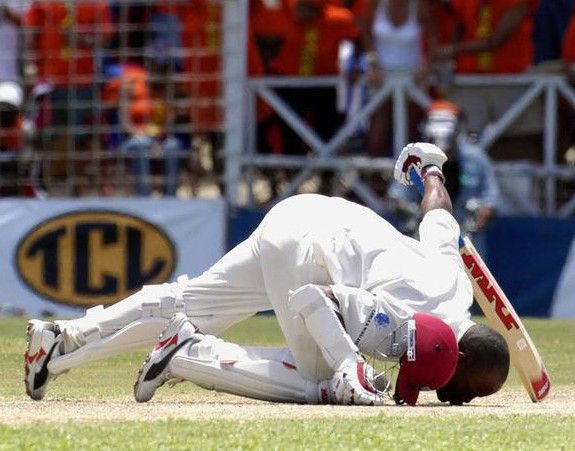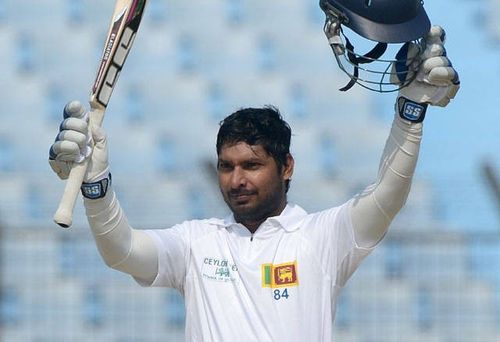
5 instances when Brian Lara's 400 was considered to be under threat
Brian Lara did the unthinkable when he made 400 in a single test inningsIn the game of cricket, there are several records that just seem impossible to break – Sir Jack Hobb’s 199 centuries, Sachin Tendulkar’s 30000+ international runs, Jim Laker’s 19 wickets in a game and West Indies’ streak of 29 consecutive test series without a defeat. These records stand at the pinnacle of international cricket, and it must be said that it would take someone extremely special to even reach these heights. Among those many records, is Brian Lara’s historic 400 in test cricket.In 1994, Brian Lara broke the then highest individual score of 365* made by Garry Sobers in test cricket when he scored 375 against England at St. John’s. Sobers’ record had stood for 38 years, so most people expected Lara’s record to stand for atleast half that time. But history was made a mere 8 years later when Matthew Hayden smacked Zimbabwe around to make 380 in a test match, and the Princeâs record had been shattered. Lara took it well though, congragulating Hayden on his brilliance,But a mere six months later, he batted with vengeance against a hapless English lineup as he scored 400* in two and a half days to reclaim his record. He shook the world as Lara crowned himself as the rightful holder of one of the most difficult records in test cricket, and set critics waxing lyrical about him.It has been 11 years since he set the record, and it has not been broken yet,But it is not fair to say that no one has tried to. With batsmen ruling over bowlers in current times, it will only be a matter of time as the record is shattered again. Over the last few years, there have been numerous attempts to overtake Lara, but none have succeeded. But with cricketers tempering skill with aggression, it seems Laraâs record will be in danger in the coming years.Letâs take a look at 5 instances when Lara almost lost his record:
#5 Kumar Sangakkara - 319

Having missed his maiden triple century in 2004, Sangakkara was ready to make amends when he faced Bangladesh on a flat pitch. After choosing to bat, Sri Lanka lost early wickets, but Sangakkra and Jayawardene settled down to make a mountain of runs. Sangakkara was at his best as he cut and pulled the hapless Bangladesh bowlers all over the ground. Batting with his usual mix of solid defense and gung-ho flair, Sangakkara split the gaps with surgical efficiency as the Bangladeshis did not know where to bowl at him.
He started slowly, but accelerated in the middle and brough up his century off 146 balls. As the pitch flattened out, he showed his range of strokes as he became unstoppable in the field. Sohag Gazi was smacked over midwicket for four and then for six. Bangladesh’s best bowler Shakib al-Hasan was also carted over square leg. Pace was introduced in the form of Al-Amin Hossain, but Sangakkara dismissed him from his presence. But Shakib bowled well at the other end, picking up key wickets. As Sri Lanka passed 300, they lost Angelo Matthews.
With his dismissal, Sri Lanka kept loosing wickets at regular intervals, but Sangakkara carried on. He favoured the three left arm spinners bowling at him as he regularly came down the track to loft it over midwicket or play inside out. As Sangakkara passed 250, Sri Lanka’s 8th wicket fell, and it was time to switch gears. He first slog swept Shakib Al-Hasan for two sixes in an over, and then hit Sohag Gazi for two fours in the next.
As the 9th wicket fell in the next over, Sangakkara combined aggression with caution as he carefully took a single of the penultimate ball of each over. But with nervy moments from the last man Nuwan Pradeep, it was time to bring things to an end. On 286, Sangakkara hit a boundary and then consecutive sixes off Shakib Al-Hasan to reach his first ever triple-century. With the pitch and conditions favouring the batsmen, Sangakkara could have easily gone past Lara. But due to the lack of wickets in hand, he was forced to attack every ball, and eventually lost his wicket, caught at the long-on boundary as the last man out.